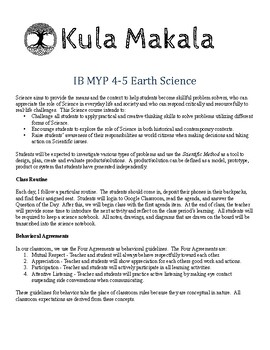IB MYP 4-5 Earth Science
- PDF
Description
If you are looking for an IB MYP Class that will engage your students and make them think orthogonally about serious world issues, this is your curriculum. In this unit, I draw from Native American sources, local scientific sources, and the trades in order to help students understand the connections of Earth Science to every day life. We tackle subjects like origin stories from a multicultural perspective and the limitations of science. We delve into the idiosyncrasies of mining and the global impact of this industry. We get into the politics of water and in particular, we address the problems with groundwater. We also get into the pros and cons of fossil fuels and the global issues surrounding this. We take a turn into human paleontology and take a tour through the Cenozoic and discuss how the environment shapes culture. Lastly, we discuss just how much homo sapiens can actually control nature. On a personal note, this is the most interesting and engaging class that I have ever taught. Every unit has had students sitting on the edge of their seats wondering what will come next. If you incorporate the suggested books into this class, this will easily pass muster as a college level class. All of the assessments, both formative and summative are included in this unit. Every assessment has task specific rubrics that help guide students to higher achievement. Every unit is backwards designed with NGSS content standards woven into the material.


